Pipe fittings, like elbows and tees, help change the direction of the flow. Some parts, like reducers and reducing tees, change the size of the pipe. Connect different parts, like couplings, and stop flows, like with caps.
Pipe fittings, like elbows and tees, help change the direction of the flow. Some parts, like reducers and reducing tees, change the size of the pipe. Connect different parts, like couplings, and stop flows, like with caps.
There are different types of pipe fitting used in piping. Pipe Fittings used in piping work are listed below:
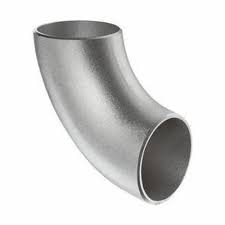 | 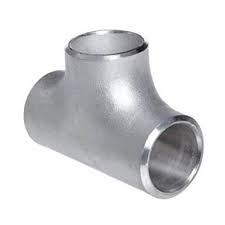 | 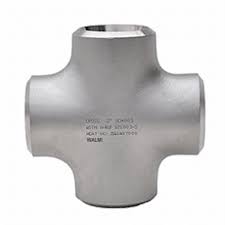 | 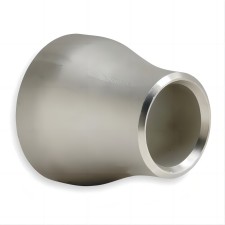 |
| Elbow | Tee | Cross | Reducer |
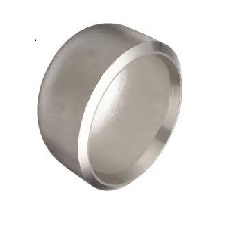 | 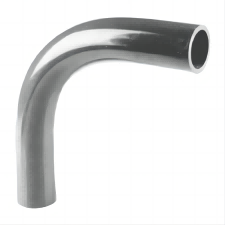 | 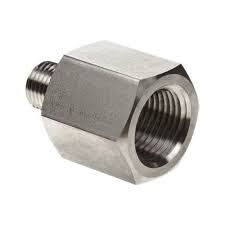 | 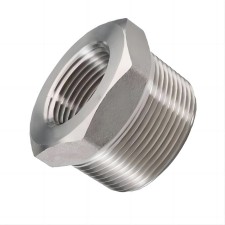 |
| Cap | Long Radius Bend | Adapters | Bush |
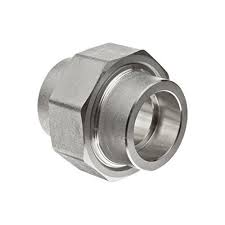 | 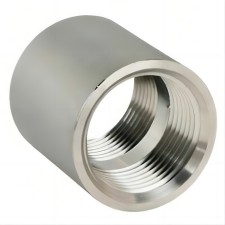 | 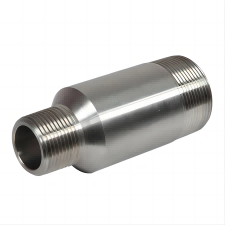 | 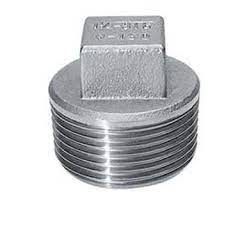 |
| Union | Coupling | Swage Nipple | Plug |
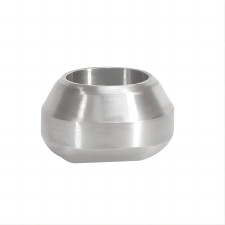 |  | 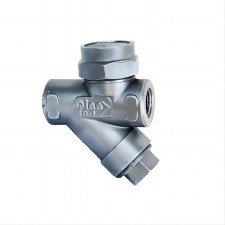 | 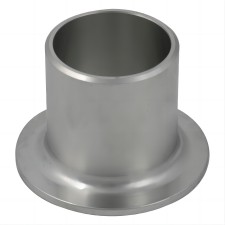 |
| Olet | Expansion Joint | Steam Traps | Stub Ends |
In the chart above, you can see a list of the standard pipe fittings that are used the most. You can either forge or cast these standard fittings. To make wrought fittings, you can only use seamless pipes. The plate is used to make fittings with large diameters that are welded together.
Pipe Elbow
More than any other pipe fitting, the elbow is used the most. It gives you the freedom to change how the pipe goes. Most elbows come in two standard shapes: 90° and 45°. It can be cut to any other size, though. There are two types of radius that can be used for elbows: Short radius (1D) and Long Radius (1.5D).
A 90-degree elbow is put in between two pipes to make them go in a different direction by 90 degrees. There are both long radius and short radius forms.
Between the pipes, a 45-degree elbow is put in place to change the pipe's direction by 45 degrees.
In a long radius elbow, the centerline radius is 1.5 times the nominal size of the pipe, or 1.5 times the diameter of the pipe. Most elbows in pipes have a long radius because they lose less pressure than elbows with a short radius. It took up more space than an elbow with a short radius.
In a short radius elbow, the centerline radius is the same as the nominal size of the pipe, or one times the diameter of the pipe. When there isn't much room, short radius elbows are used. But it has a high-pressure drop because the flow direction changes quickly.
The 90-degree reducing elbow is made to change the direction of a pipe and make it smaller. The reducing elbow gets rid of one pipe connection and cuts the amount of welding by more than a third. Also, the diameter of the reducing elbow gets smaller as it goes around the bend. This makes it easier for water to flow through and lessens the effects of stream turbulence and possible internal erosion. These features keep the pressure in the line from dropping by a lot.
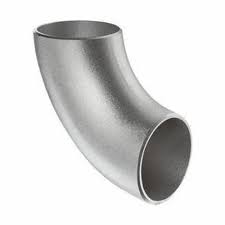 |  | 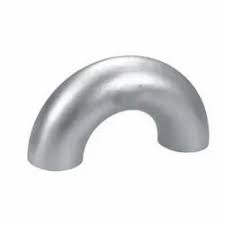 |
| 90-degree elbow | 45-degree elbow | 180-Degree Elbow |
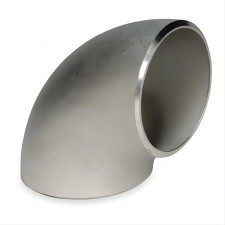 | 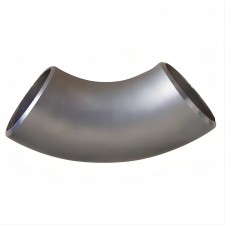 | 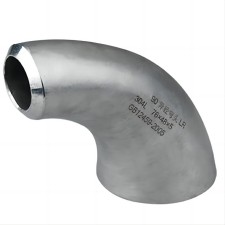 |
| a short radius elbow | a long radius elbow | 90-degree reducing elbow |
Pipe Bend
Pipelines that move fluids and need to be pigged use bends with a long radius. Because the pipe bend has a long radius and a smooth change in direction, there is very little pressure drop and fluid and pig can flow smoothly. There are often 3D and 5D pipe bends available. Here, the pipe size is D.
Miter bends aren't like other pipe fittings because they are made from pipes. Most of the time, they are used for sizes 10" and up because elbows in large sizes are more expensive. Miter bends can only be used on low-pressure water lines. Miter bends can be made with 2, 3, or 5 separate pieces.
Returns – 180 Degree Elbow: To make a 180o turn, you use your elbows to move backwards. There are short and long patterns. The heating coil, heat exchanger, tank vent, and other parts all use returns.
Pipe Tee
A pipe tee is used to send fluid from the run pipe to different places or to collect it. It is a short piece of pipe that splits in the middle at a 90-degree angle. In piping, there are two types of Tee: the Equal or Straight Tee and the Reducing or Uneven Tee.
Straight Tee
The diameter of the branch in a straight tee is the same as the diameter of the Run (Header) Pipe.
Reducing Tee
The diameter of the branch is smaller than the diameter of the Run (Header) Pipe in a reducing tee.
Barred Tee
In pigged pipelines, a barred tee, which is also called a scrapper tee, is used. A restriction bar is welded inside the tee branch to stop the pig or scrapper from getting into the branch. The bars are welded into the branch so that the pig can get out of the run pipe without any trouble.
Wye Tee / Lateral
It is a type of Tee that has a branch at an angle other than 90°, like 45°. With a wye tee, two pipes can be joined at a 45° angle. This kind of tee cuts down on the friction and turbulence that could slow the flow. A lateral is another name for a wye-tee.
 | 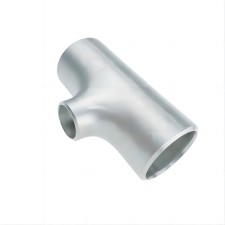 | 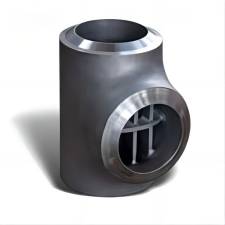 | 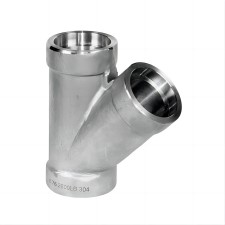 |
| Straight Tee | Reducing Tee | Barred Tee | Wye Tee / Lateral |
Cross
Cross is also called a four-way pipe connector. There is one way in and three ways out of a cross (or vice versa). Most of the time, crosses aren't used in process pipes to move fluid. But the firewater sprinkler line is full of fake crosses.
Pipe Reducers
With a pipe reducer, the size of the pipe can be changed. In piping, there are two types of reducers: concentric and eccentric.
In a Concentric reducer, also known as a conical reducer, the center of both ends is on the same axis. It maintains the centerline elevation of the pipeline. When the center lines of the larger and smaller pipe are to be maintained the same, concentric reducers are used.
As the picture shows, the center of both ends of an eccentric reducer is on a different axis. It keeps the pipeline's BOP (bottom of pipe) level the same. Eccentric reducers are used when one of the outside surfaces of the pipe needs to stay the same.
Offset = ( Larger ID – Smaller ID) / 2
 | 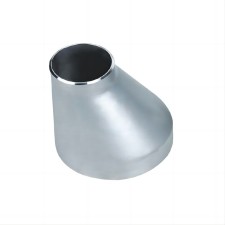 |
| Concentric reducer | Eccentric reducer |
Swage Reducer
The swage is like a reducer, but it is smaller, and it is used to connect larger pipes to smaller pipes that are screwed or socket-welded. They come in both concentric and eccentric types, just like reducers. There are different kinds of ends for swages. Like one end is plain and the other is threaded.

Pipe Caps
The pipe's end is covered by the cap. At the end of a run of pipes, pipe caps are used. It is also used in the headers of pipes to make connections for the future.
Stub Ends
With a lap joint flange, you use stub ends. The stub end of this type of flange is welded to the pipe, but the flange can be moved over the stub end. It looks like a flange, but it is covered by ASME B16.9, so it is considered a pipe fitting.
 |  |
| Pipe Caps | Stub Ends |
Piping Union
Unions are used instead of flanges to connect low-pressure pipes with small bores when the pipe needs to be taken apart more often. The ends of a union can either be threaded or have a socket weld. A union is made up of three parts: a nut, a female end, and a male end. When the male and female ends are put together, the nuts put enough pressure on the joint to seal it.
Pipe Coupling
Full Coupling is used for connecting small bore pipes. It is used to connect pipe to pipe or pipe to swage or nipple. It can be threaded or socket ends types.
Half Coupling is used for small bore branching from a vessel or large pipe. It can be threaded or socket type. It has a socket or thread end on only one side.
Reducing coupling is used to connect two different sizes of pipe. It is like a concentric reducer that maintains a centerline of the pipe but is small in size.
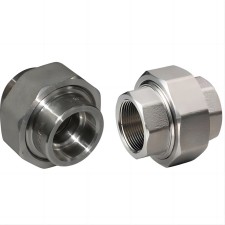 | 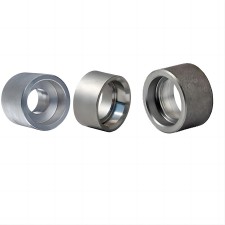 | .jpg) |
| Piping Union | Pipe Coupling | Pipe Nipple |
Pipe Nipple
The nipple is a short pipe stub with a male pipe thread at each end or at one end. It is used for connecting two other fittings. Nipples are used for connecting pipes, hoses, and valves. Pipe nipples are used in low-pressure piping.
Socket weld and Threaded Pipe Fittings
Socket weld and Threaded Pipe Fittings are forged products and classified based on their pressure-temperature rating. They are available from NPS 1/8” to 4”. These fittings are available in four pressure-temperature rating classes.
2000 class fittings are available only in threaded type.
3000 & 6000 class fittings are available in both Threaded and Socket Weld types.
9000 class fittings are available in only the socket weld type.
These fittings are used for small bore and low-pressure piping.
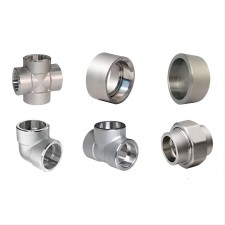 | 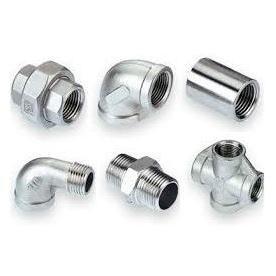 |
| Socket Weld Pipe Fittings | Threaded Pipe Fittings |
Pipe Fittings dimensions of the fittings must meet the requirements of the standard
For Wrought Product (WP) Dimension is covered inASME B16.9- which is standard for Factory-made Wrought Butt-welding Fittings for size NPS 1⁄₂ to NPS 48” and
And B16.28- which is standard for Wrought Steel Butt-Welding Short Radius Elbows and Returns for size NPS 1⁄₂ to NPS 24”
For Forged Fittings, Dimensions are covered in, ASME B16.11- a standard for Forged Steel Fittings that covers Socket Welding and Threaded fittings
Contact: Sino Special Metal Co., Ltd.
Phone: 86-19527792928
E-mail: sales@ssmsteel.com
Whatsapp:86-19527792928
Add: Mudu town Jinfeng South Road, Wuzhong District, Suzhou City, Jiangsu Province
We chat
